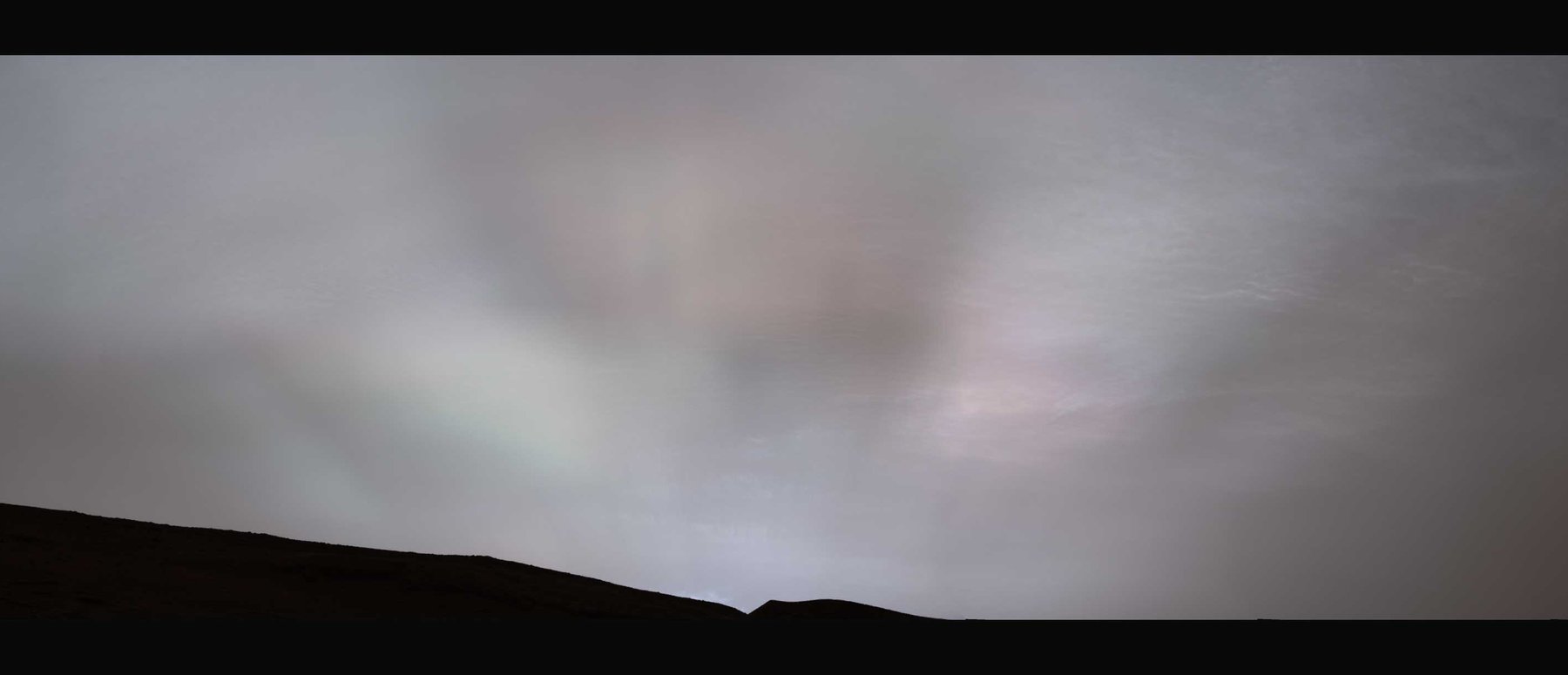NASA’s Curiosity Rover usually looks down at the ground, studying nearby rocks and craters. But sometimes, it looks up and sees something wonderful.
A new image released by Curiosity shows beautiful sun rays, called crepuscular rays, streaming through a bank of clouds on Mars at sunset. While relatively common here on Earth, they have never been seen on Mars. Crepuscular comes from crepusculum, the Latin word for twilight.
Another image from the rover shows a feather-shaped iridescent cloud in the high atmosphere on Mars.
Curiosity, the ‘elder’ rover on Mars, has been studying the Red Planet for over 10 years. Recently, Curiosity has turned its cameras skyward in a new cloud-imaging campaign, with a focus on studying clouds at twilight. This builds on its 2021 observations of clouds, including noctilucent, or night-shining, clouds.
The image of crepuscular rays was captured by Curiosity at sunset on Feb. 2, 2023, the 3,730th Martian day, or sol, of the mission.
Crepuscular rays — also called sun rays and sunbeams — are created when sunlight shines through gaps in clouds and continues through an atmosphere that contains dust and/or haze. This dust or haze scatters some of the bright light that can be seen against the darker clouds.
NASA says that while most Martian clouds hover no more than 37 miles (60 kilometers) above the ground and are composed of water ice, the clouds in the latest images appear to be at a higher altitude, where it’s especially cold. That suggests these clouds are made of carbon dioxide ice, or dry ice.

In addition to the image of sun rays, Curiosity captured these shimmery, colorful clouds shaped like a feather on January 27, 2023. When illuminated by sunlight, certain types of clouds can create a rainbowlike display called iridescence.
“Where we see iridescence, it means a cloud’s particle sizes are identical to their neighbors in each part of the cloud,” said Mark Lemmon, an atmospheric scientist with the Space Science Institute in Boulder, Colorado, in a JPL press release. “By looking at color transitions, we’re seeing particle size changing across the cloud. That tells us about the way the cloud is evolving and how its particles are changing size over time.”
Curiosity captured both the sun rays and iridescent clouds as panoramas, each of which was stitched together from 28 images sent to Earth. The images have been processed to emphasize the highlights.
Look for more of these ‘moody’ but serene images from Curiosity as it continues it upward-looking imaging campaign.

